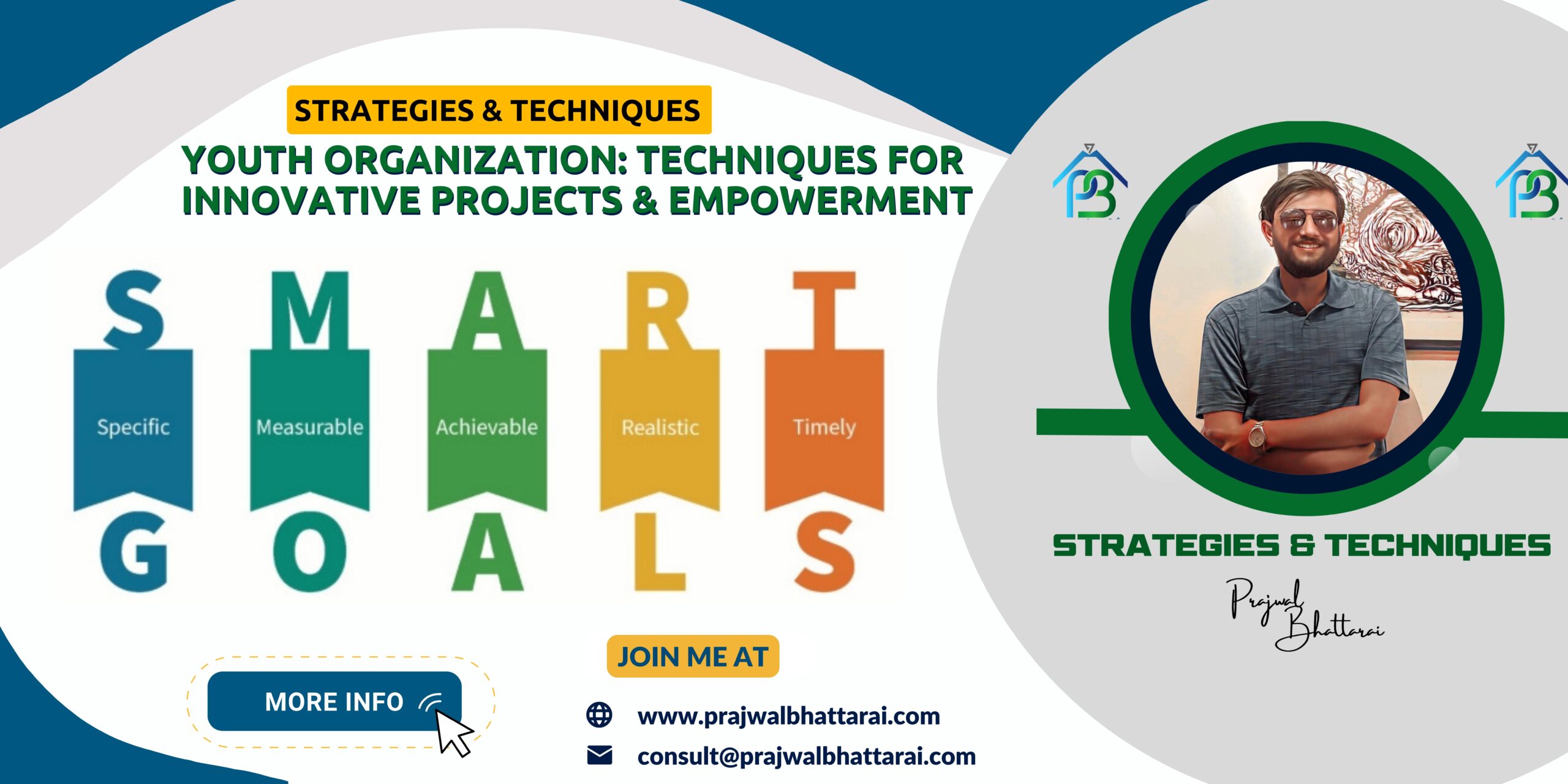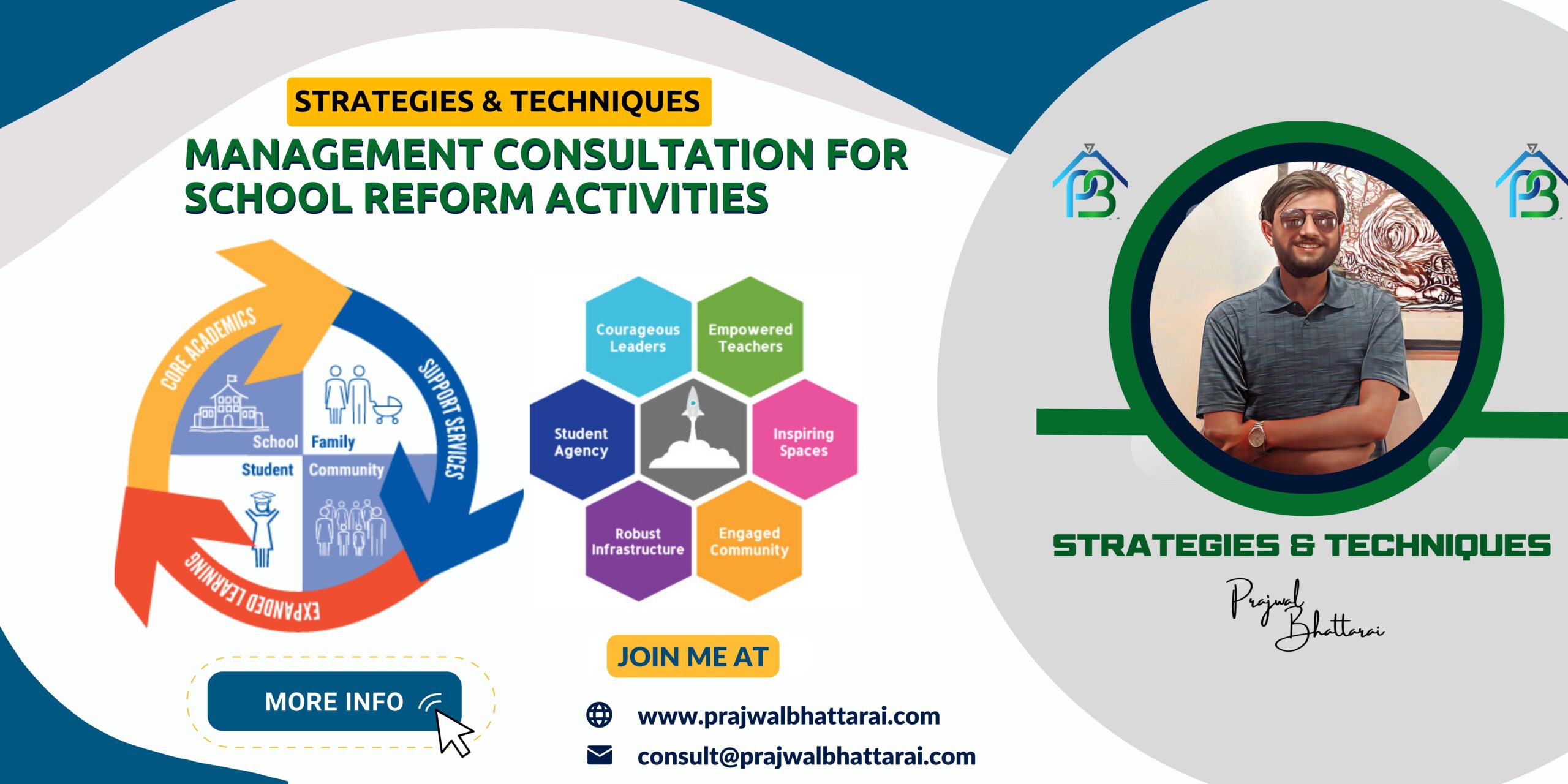Prajwal’s Strategies and techniques for corporate bodies and business entities to improve their quality and management practices through quality advocacy and management consultation.
Prajwal Bhattarai is an expert in quality advocacy and management consultation, with a proven track record of helping corporate bodies and business entities to improve their quality and management practices. Some of the techniques and strategies that Prajwal might recommend include Root Cause Analysis, Change Management, Continuous Learning, Customer Feedback and Satisfaction, Design Thinking, Total Productive Maintenance (TPM), Value Stream Mapping (VSM), and Balanced Scorecard. These techniques are all proven to be effective in identifying and addressing issues in processes, improving productivity and efficiency, and enhancing customer satisfaction. By adopting these techniques, organizations can stay competitive, drive innovation, and achieve sustainable growth. Practical examples of these techniques include using Root Cause Analysis to identify the cause of software bugs, using Design Thinking to develop new healthcare services, or using VSM to identify waste in supply chain processes. With Prajwal’s guidance and expertise, organizations can improve their quality and management practices to reach new heights of success.
-
Business Process Reengineering (BPR): BPR involves rethinking and redesigning an organization’s processes from the ground up to improve efficiency and effectiveness. It involves analyzing existing processes, identifying areas for improvement, and redesigning processes to achieve better results. For example, a logistics company could use BPR to streamline their supply chain processes, resulting in faster delivery times and lower costs.
-
Continuous Improvement Programs: Continuous improvement programs involve setting goals for improvement, measuring progress towards those goals, and continually making adjustments to improve processes. They can help organizations create a culture of continuous improvement and drive innovation. For example, a healthcare organization could implement a continuous improvement program to improve patient outcomes, with goals for reducing hospital readmissions and improving patient satisfaction.
-
Performance Management Systems: Performance management systems involve setting goals for employees, measuring their progress towards those goals, and providing feedback and support to help them achieve their goals. They can help organizations improve employee performance, increase productivity, and achieve better results. For example, a sales organization could implement a performance management system to set sales targets for their employees, measure their progress towards those targets, and provide coaching and support to help them achieve their goals.
-
Root Cause Analysis (RCA): RCA is a technique used to identify the underlying causes of problems or issues in a process or system. It involves asking “why” questions repeatedly until the root cause of the problem is identified. RCA can help organizations identify and address the underlying issues that are causing problems and prevent them from recurring in the future. For example, a software development company could use RCA to identify the root cause of a software bug, allowing them to fix the issue and prevent similar bugs from occurring in the future.
-
Change Management: Change management is the process of managing changes to an organization’s processes, systems, or culture. It involves identifying the need for change, planning the change, communicating the change, and implementing the change in a way that minimizes disruption and maximizes success. Change management can help organizations adapt to new challenges and opportunities, and improve their ability to innovate. For example, a financial services company could use change management to implement a new customer service platform, ensuring that employees are trained on the new system and customers are informed about the changes.
-
Continuous Learning: Continuous learning involves creating a culture of ongoing education and development within an organization. It involves providing employees with opportunities to learn new skills, acquire knowledge, and develop their capabilities. Continuous learning can help organizations stay competitive, improve employee engagement and retention, and drive innovation. For example, a technology company could offer regular training and development opportunities for employees to learn new programming languages or development frameworks.
-
Customer Feedback and Satisfaction: Collecting and analyzing customer feedback can help organizations understand their customers’ needs and expectations, and identify areas for improvement. By measuring customer satisfaction, organizations can identify areas where they excel and areas where they need to improve. This can help organizations improve customer loyalty, increase sales, and drive growth. For example, a retail company could collect customer feedback through surveys or focus groups, and use that feedback to improve their product offerings or customer service.
-
Design Thinking: Design thinking is a human-centered approach to problem-solving that involves empathy, creativity, and experimentation. It involves understanding the needs of customers, generating new ideas, prototyping solutions, and testing them with customers. Design thinking can help organizations develop innovative solutions that meet customer needs and drive growth. For example, a healthcare organization could use design thinking to develop new healthcare services or products that improve patient outcomes and satisfaction.
-
Total Productive Maintenance (TPM): TPM is a technique used to improve the reliability and productivity of manufacturing equipment. It involves involving all employees in the maintenance process, identifying and eliminating sources of waste, and continuously improving equipment performance. TPM can help organizations reduce downtime, improve product quality, and increase efficiency. For example, a manufacturing company could use TPM to improve the reliability and performance of their production equipment, resulting in higher quality products and faster production times.
-
Value Stream Mapping (VSM): VSM is a technique used to identify and eliminate waste in a process or system. It involves mapping the flow of materials, information, and resources through a process, identifying sources of waste, and developing solutions to eliminate that waste. VSM can help organizations streamline processes, reduce costs, and improve quality. For example, a logistics company could use VSM to identify and eliminate sources of waste in their supply chain processes, resulting in faster delivery times and lower costs.
-
Balanced Scorecard: The Balanced Scorecard is a strategic management tool that helps organizations track and measure performance across multiple areas. It involves defining strategic objectives, developing key performance indicators (KPIs) for each objective, and tracking progress towards those objectives over time. The Balanced Scorecard can help organizations align their activities with their strategic objectives, measure progress towards those objectives, and make data-driven decisions. For example, a non-profit organization could use the Balanced Scorecard to track progress towards their fundraising goals, donor retention rates, and program impact.
-
Assessment of Quality management standards: Quality management standards are a set of globally recognized standards that help organizations ensure quality and efficiency in their processes. They cover a wide range of areas, such as quality management, environmental management, and information security. Implementing ISO standards can help organizations improve their processes, reduce waste, and increase customer satisfaction. For example, a manufacturing company could implement ISO 9001:2015 for quality management, ensuring that their processes meet global standards for quality and efficiency.



